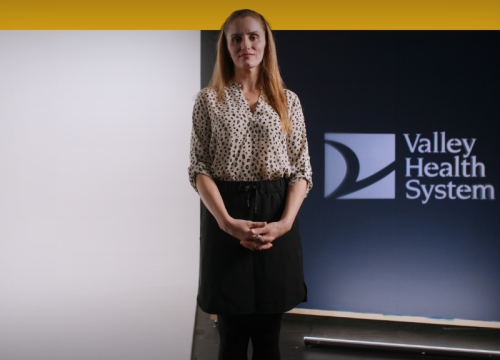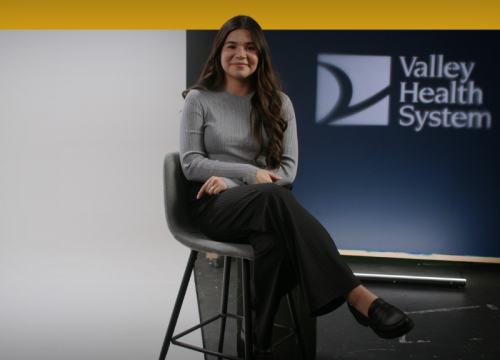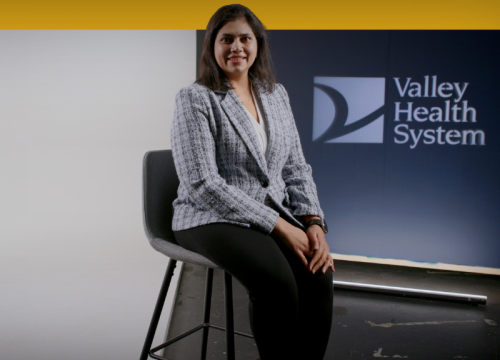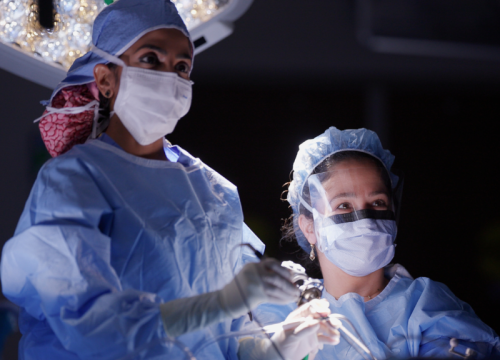Video-assisted thoracic surgery, or VATS, is a minimally invasive technique used for thoracic, or chest, surgeries. At Valley, VATS is used to treat lung cancer. VATS uses small incisions, making it a kinder, gentler approach.
Benefits of VATS
- Less trauma to the chest wall
- Less pain
- Less pain medication required
- Faster recovery
- This minimally invasive procedure presents a sharp contrast to traditional open chest surgery. In open chest surgery, which involves a large incision, hospital stay of seven to 12 days, and months of recovery.
VATS for Lung Cancer at Valley
Single-port VATS:
- At many institutions, lobectomy and lymph node dissection for lung cancer are performed through a six- to eight-inch incision of the side of the chest, called a thoracotomy. In a thoracotomy, the ribs are spread apart so that the surgeon can see and operate inside the chest.
- At the Lung Cancer Center at Valley, we perform lobectomy and lymph node dissection using VATS instead of a thoracotomy. Further, we perform VATS using only one operating port instead of the traditional three to four. This is known as single-port VATS.
- During single-port VATS, surgeons at Valley perform the entire lobectomy and lymph node dissection through a single incision (port). This occurs while the telescope is inserted through the chest tube site.
- Single-port VATS is the most minimally invasive way to perform lung cancer surgery described to date.
Why Choose Valley for VATS?
- Single-port VATS for lung cancer: At Valley, the vast majority of lobectomies for stage lung cancer are performed using the single-port VATS technique. Across the U.S., most institutions perform this surgery through thoracotomy, or, traditional open chest surgery.
- Extensive experience: Thoracic surgeons at Valley have been performing VATS and other thoracic surgeries for more than 10 years. Valley is one of the few hospitals in northern New Jersey to offer VATS for lung cancer.
- Faster recovery: Traditional open chest surgery typically involves a large incision, hospital stay of seven to 12 days, and months of recovery. VATS eliminates the need for large incisions. Patients endure less trauma to the chest wall, experience far less pain, and require much less pain medication.

















